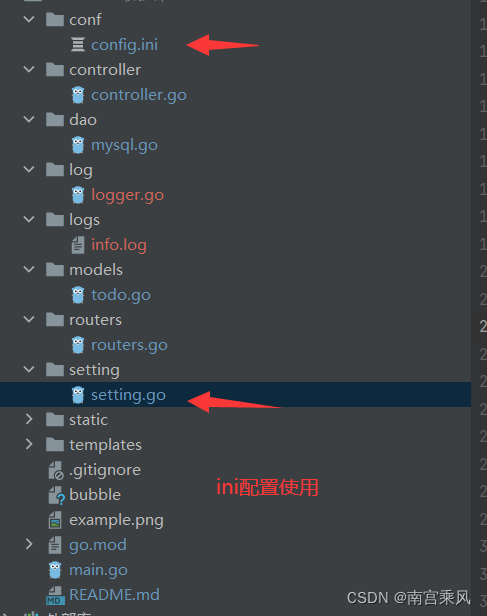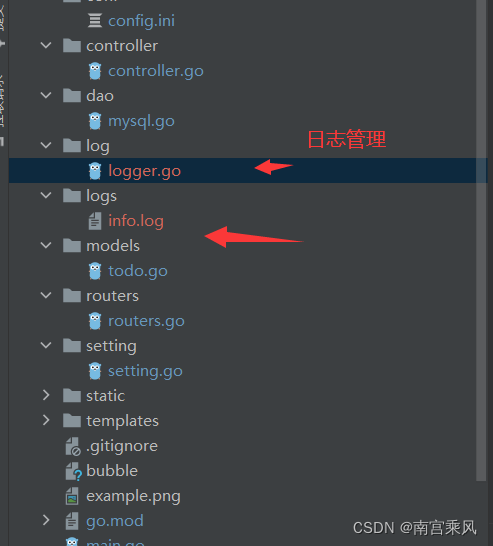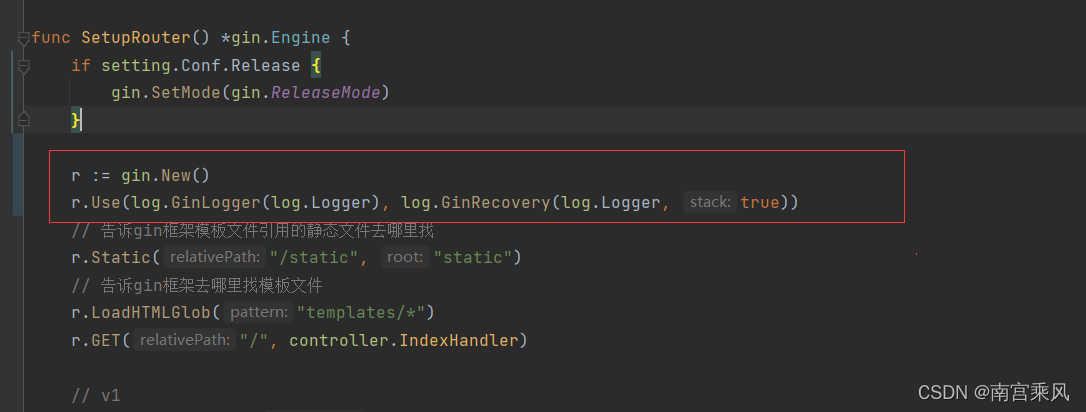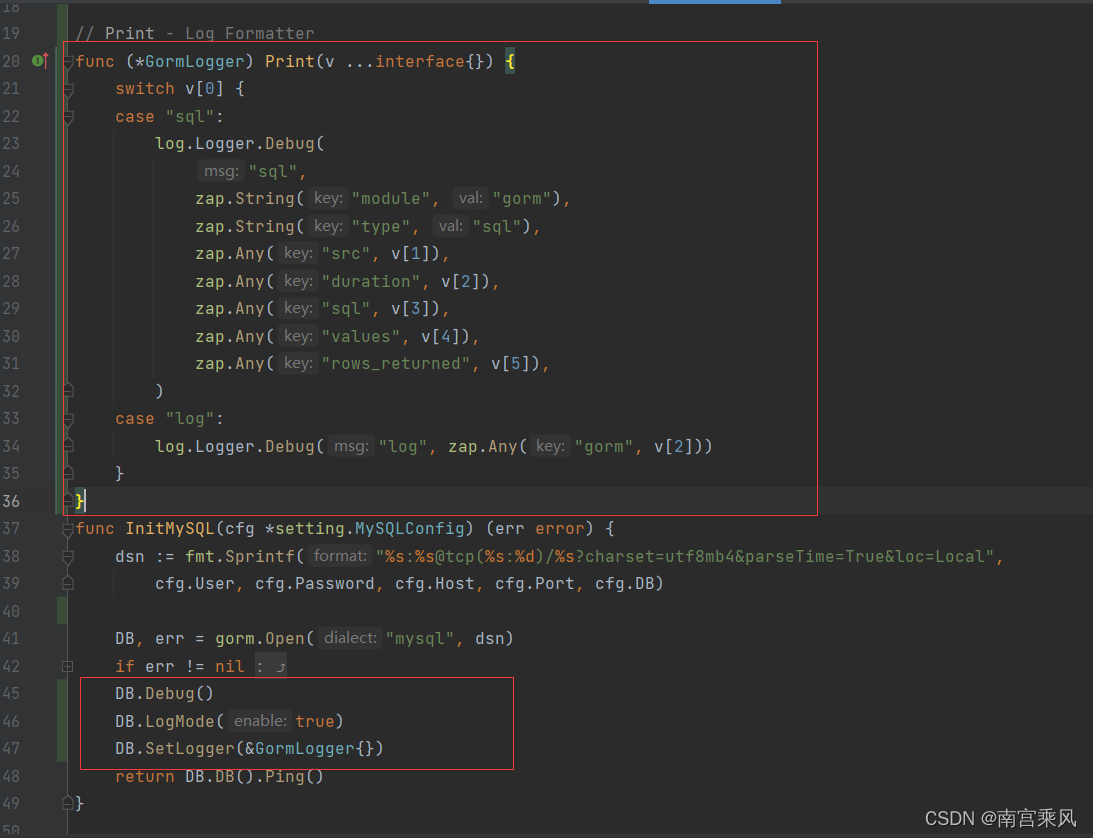1
2
3
4
5
6
7
8
9
10
11
12
13
14
15
16
17
18
19
20
21
22
23
24
25
26
27
28
29
30
31
32
33
34
35
36
37
38
39
40
41
42
43
44
45
46
47
48
49
50
51
52
53
54
55
56
57
58
59
60
61
62
63
64
65
66
67
68
69
70
71
72
73
74
75
76
77
78
79
80
81
82
83
84
85
86
87
88
89
90
91
92
93
94
95
96
97
98
99
100
101
102
103
104
105
106
107
108
109
110
111
112
113
114
115
116
117
118
119
120
121
122
123
124
|
package log
import (
"bubble/setting"
"github.com/gin-gonic/gin"
"github.com/natefinch/lumberjack"
"go.uber.org/zap"
"go.uber.org/zap/zapcore"
"net"
"net/http"
"net/http/httputil"
"os"
"runtime/debug"
"strings"
"time"
)
var Logger *zap.Logger
// InitLogger 初始化Logger
func InitLogger(cfg *setting.LogConfig) (err error) {
writeSyncer := getLogWriter(cfg.Filename, cfg.MaxSize, cfg.MaxBackups, cfg.MaxAge)
//fmt.Println(cfg.Filename)
encoder := getEncoder()
var l = new(zapcore.Level)
err = l.UnmarshalText([]byte(cfg.Level))
if err != nil {
return
}
core := zapcore.NewCore(encoder, writeSyncer, l)
Logger = zap.New(core, zap.AddCaller())
return
}
func getEncoder() zapcore.Encoder {
encoderConfig := zap.NewProductionEncoderConfig()
encoderConfig.EncodeTime = zapcore.ISO8601TimeEncoder
encoderConfig.TimeKey = "time"
encoderConfig.EncodeLevel = zapcore.CapitalLevelEncoder
encoderConfig.EncodeDuration = zapcore.SecondsDurationEncoder
encoderConfig.EncodeCaller = zapcore.ShortCallerEncoder
return zapcore.NewJSONEncoder(encoderConfig)
}
func getLogWriter(filename string, maxSize, maxBackup, maxAge int) zapcore.WriteSyncer {
lumberJackLogger := &lumberjack.Logger{
Filename: filename,
MaxSize: maxSize,
MaxBackups: maxBackup,
MaxAge: maxAge,
}
return zapcore.AddSync(lumberJackLogger)
}
// GinLogger 接收gin框架默认的日志
func GinLogger(logger *zap.Logger) gin.HandlerFunc {
return func(c *gin.Context) {
start := time.Now()
path := c.Request.URL.Path
query := c.Request.URL.RawQuery
c.Next()
cost := time.Since(start)
logger.Info(path,
zap.Int("status", c.Writer.Status()),
zap.String("method", c.Request.Method),
zap.String("path", path),
zap.String("query", query),
zap.String("ip", c.ClientIP()),
zap.String("user-agent", c.Request.UserAgent()),
zap.String("errors", c.Errors.ByType(gin.ErrorTypePrivate).String()),
zap.Duration("cost", cost),
)
}
}
// GinRecovery recover掉项目可能出现的panic,并使用zap记录相关日志
func GinRecovery(logger *zap.Logger, stack bool) gin.HandlerFunc {
return func(c *gin.Context) {
defer func() {
if err := recover(); err != nil {
// Check for a broken connection, as it is not really a
// condition that warrants a panic stack trace.
var brokenPipe bool
if ne, ok := err.(*net.OpError); ok {
if se, ok := ne.Err.(*os.SyscallError); ok {
if strings.Contains(strings.ToLower(se.Error()), "broken pipe") || strings.Contains(strings.ToLower(se.Error()), "connection reset by peer") {
brokenPipe = true
}
}
}
httpRequest, _ := httputil.DumpRequest(c.Request, false)
if brokenPipe {
logger.Error(c.Request.URL.Path,
zap.Any("error", err),
zap.String("request", string(httpRequest)),
)
// If the connection is dead, we can't write a status to it.
c.Error(err.(error)) // nolint: errcheck
c.Abort()
return
}
if stack {
logger.Error("[Recovery from panic]",
zap.Any("error", err),
zap.String("request", string(httpRequest)),
zap.String("stack", string(debug.Stack())),
)
} else {
logger.Error("[Recovery from panic]",
zap.Any("error", err),
zap.String("request", string(httpRequest)),
)
}
c.AbortWithStatus(http.StatusInternalServerError)
}
}()
c.Next()
}
}
|





